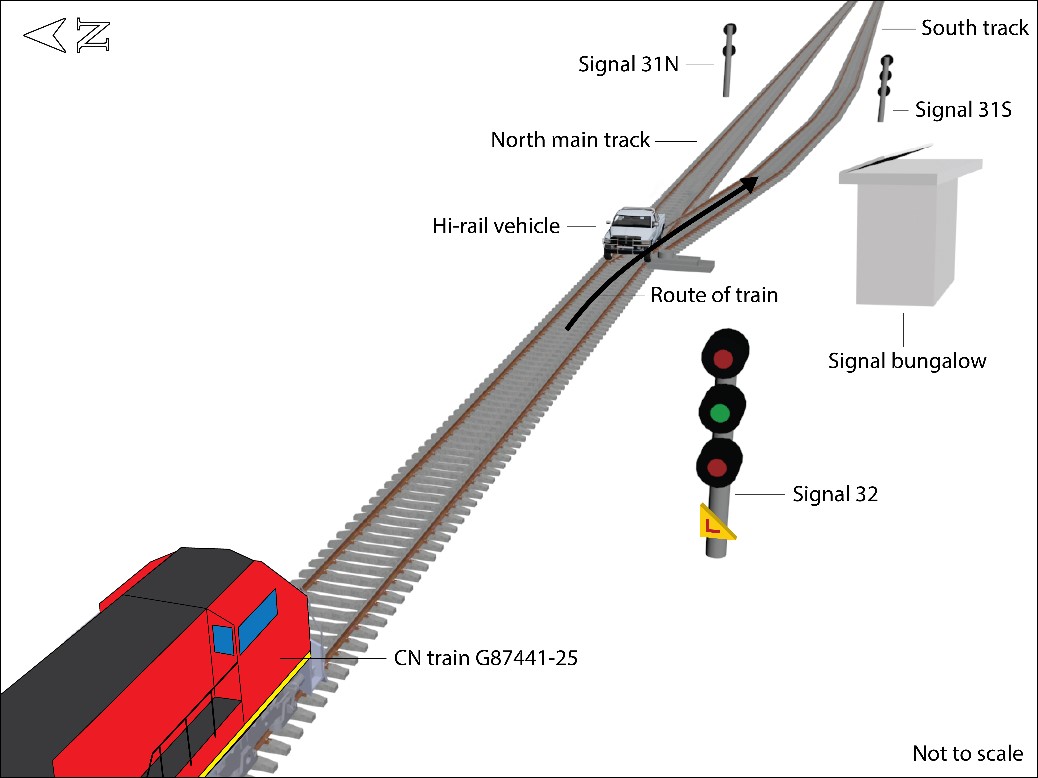
GATINEAU, Quebec — A hi-rail vehicle parked outside the area specified in its track occupancy permit — reflecting miscommunication between the vehicle’s driver and the rail traffic controller, as well as the driver’s inexperience in requesting such permits — led to a Canadian National train striking the vehicle in a Nov. 28, 2020, accident near Hornepayne, Ontario, the Transportation Safety Board of Canada determined in a report released Tuesday.
The hi-rail vehicle driven by a signal maintainer was destroyed, while the lead locomotive of the eastbound CN train suffered minor damage. No one was injured.
The TSB said in its summary of the accident that “several rules and instruction intended to confirm [track occupancy permit] limited were not followed as required,” and also noted that equipment such as hi-rail vehicles does not activate signals in Canada, so its position fouling the main line was not detected by the rail traffic controller.
It also notes that after the accident, the employee was tested for cannabis use, but two tests produced conflicting results. The TSB suggests current test protocols “may be insufficient to detect employees in railway safety-critical positions operating equipment while impaired.”
The full accident report notes that CN was fined because the employee’s actions were not in accordance with Canadian Rail Operating Rules. It also notes CN subsequently developed software that uses GPS devices aboard track equipment such as hi-rail vehicles to notify them when they approach the limits of a track occupancy permit. As of May 2022, CN has equipped 68% of its track units with the hardware necessary to support that warning system.














That’s one hell of a place to park your vehicle !